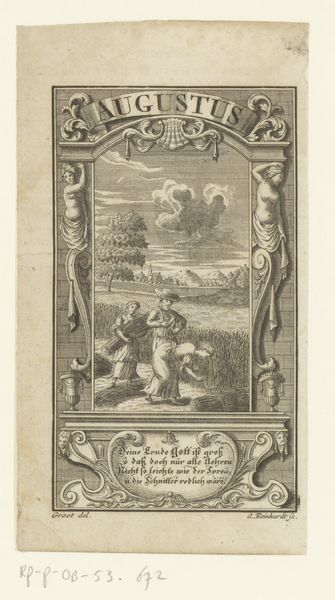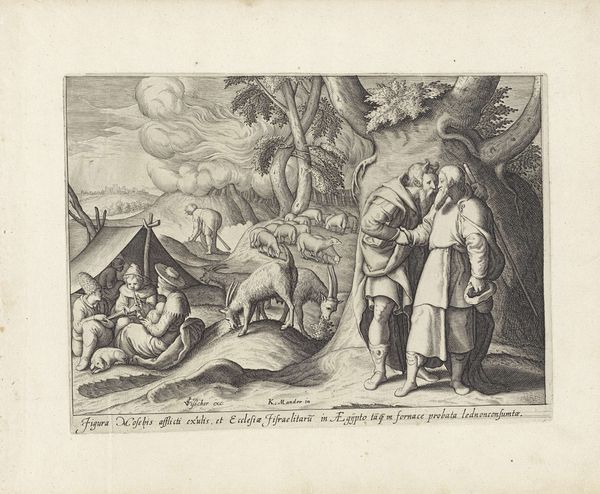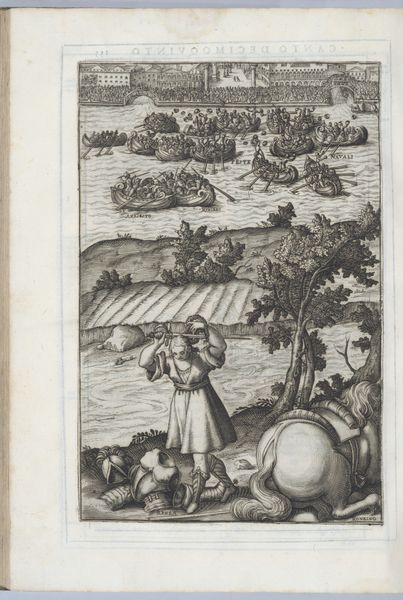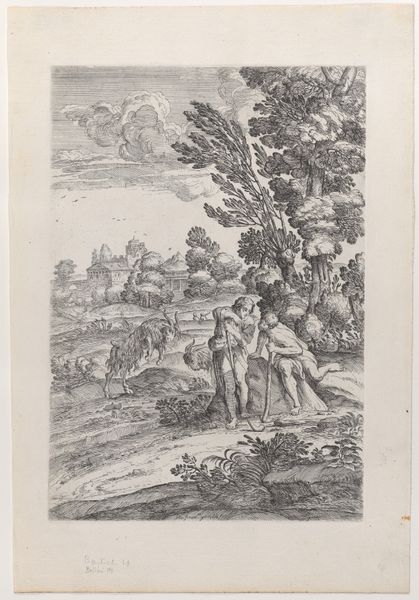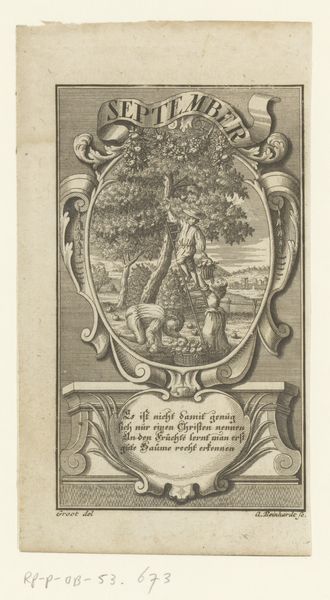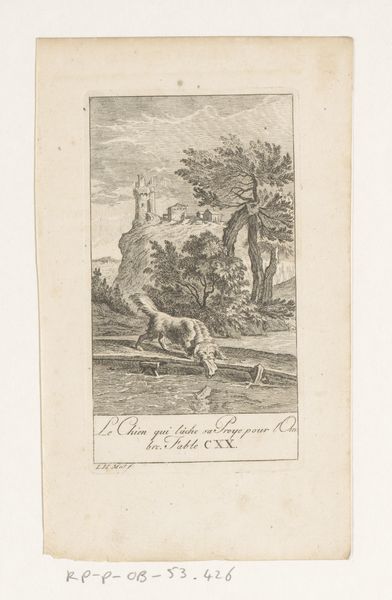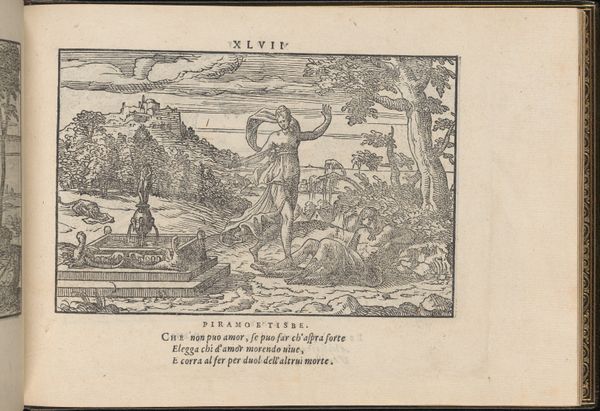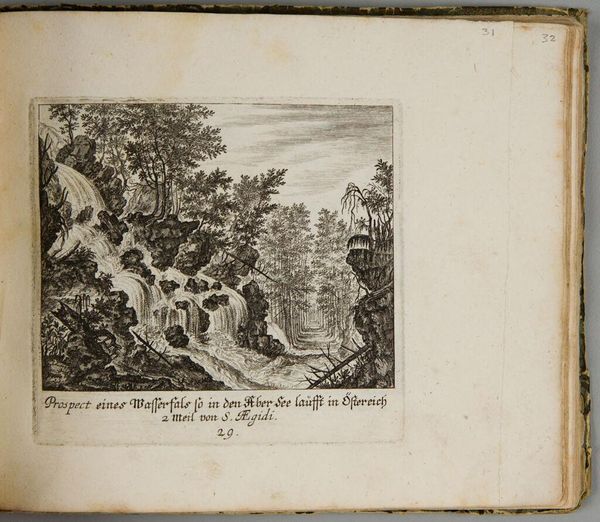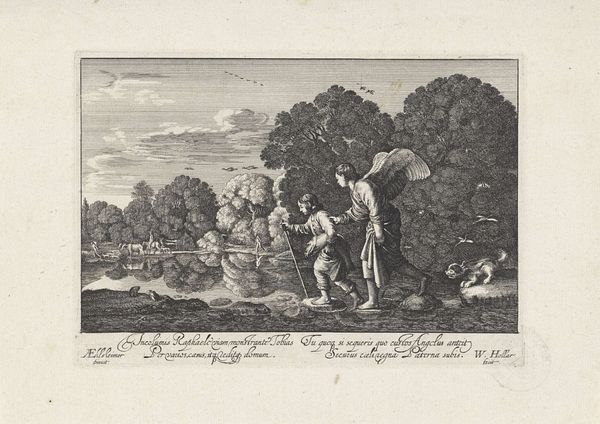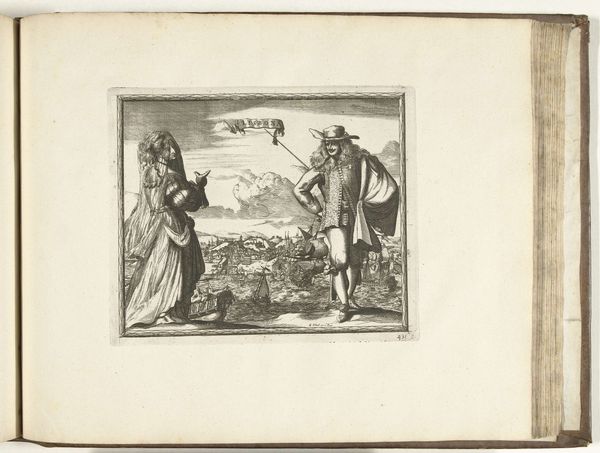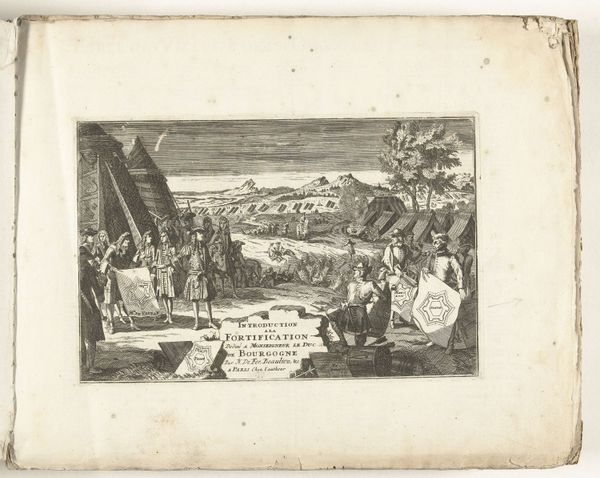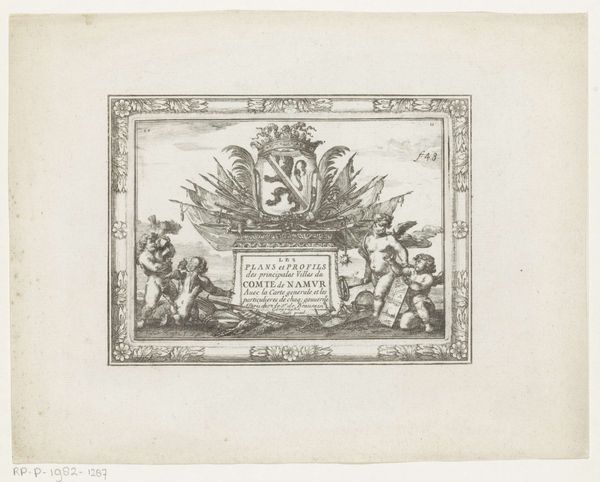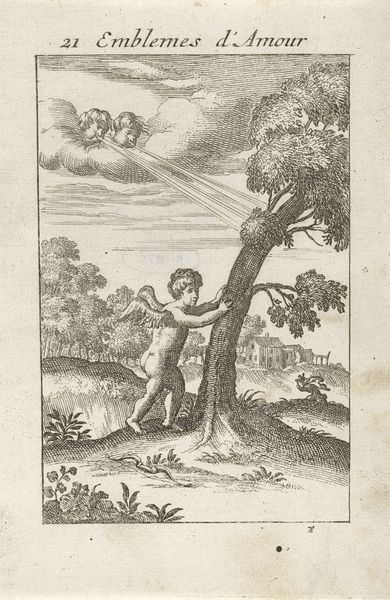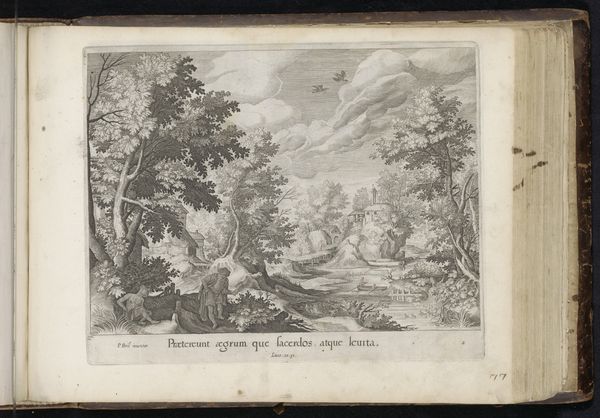
Dimensions: height 164 mm, width 92 mm
Copyright: Rijks Museum: Open Domain
Curator: Here we have “Fable of the Lark and Her Young,” an engraving from 1776, produced under the aegis of Bertin. The composition divides rather distinctly into two horizontal registers. What catches your eye first? Editor: The density of line work in the top register gives the idyllic background a sense of weight, almost oppression, contrasting sharply with the lighter treatment below. It certainly seems as if the narrative unfolds from the top-down compositionally. Curator: Indeed. Let's consider that upper portion first. Note how Bertin utilizes very fine lines to depict the distant farmhouse, the trees, even the cloud formations, creating a layered, atmospheric effect. There is a subtle gradation moving towards the background horizon, which enhances the sense of depth. Editor: And down below? The body language seems staged, formal. The figures are framed tightly by the crop, leaving them almost caged within the composition and within their social role. There is little indication of individuality. Curator: Interesting perspective! I see here an example of the rising genre-painting themes favored in this time—folk tales moralizing, rendered in fine line which certainly does echo the influence of Romanticism, wouldn’t you agree? The clean division with text at the bottom certainly indicates an effort at widening audiences by being legible to them. Editor: The clear hierarchy—background idyllic farm turning to land owner over bird's nest—emphasizes the social order so inherent in the late 18th century. Bertin makes sure to render the land owner clearly, as his decisions create immediate threat to nature and the narrative in focus. Curator: And while this rendering favors a story with very specific characters, the line-making indicates both beauty in technique and an engagement with narrative that can teach moral virtue across class boundaries. Editor: That framing, visually reinforcing a moral lesson for a wider audience... it speaks volumes about the didactic purpose art often served. Curator: Indeed. These deceptively simple images, however, give us such access into socio-political projects through history—a reminder that these techniques are as carefully constructed as any "high art."
Comments
No comments
Be the first to comment and join the conversation on the ultimate creative platform.
